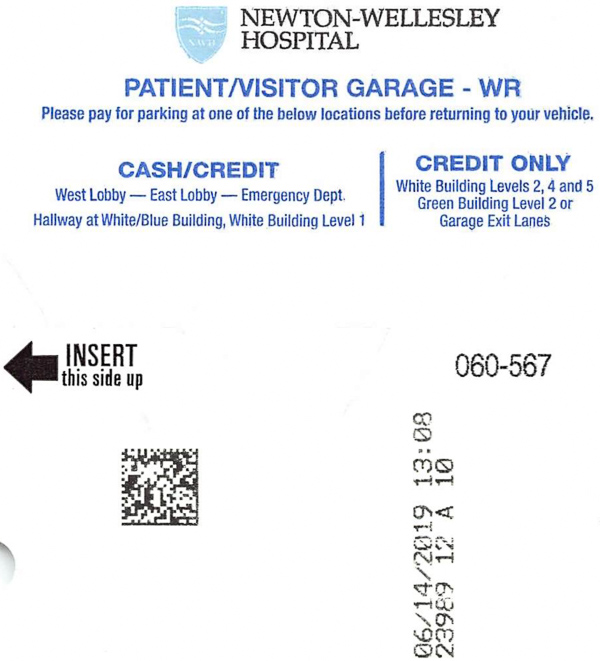I came across this parking garage ticket yesterday in a pair of jeans I hadn’t worn in the past six months. I thought, “That’s odd; usually, you turn these things in when you exit the garage.” Then I noticed the time stamp.
It is funny how many cautionary tales and lessons-learned this little ticket evokes.
First, the timestamp itself – June 14th, 1:09 PM. I had had an undiagnosed heart attack five days earlier at the finish line of a BQ marathon performance and had misdiagnosed it as heartburn. I would soon learn that I had had a second minor attack that morning around 8:30 AM – almost five hours before making my way to treatment.
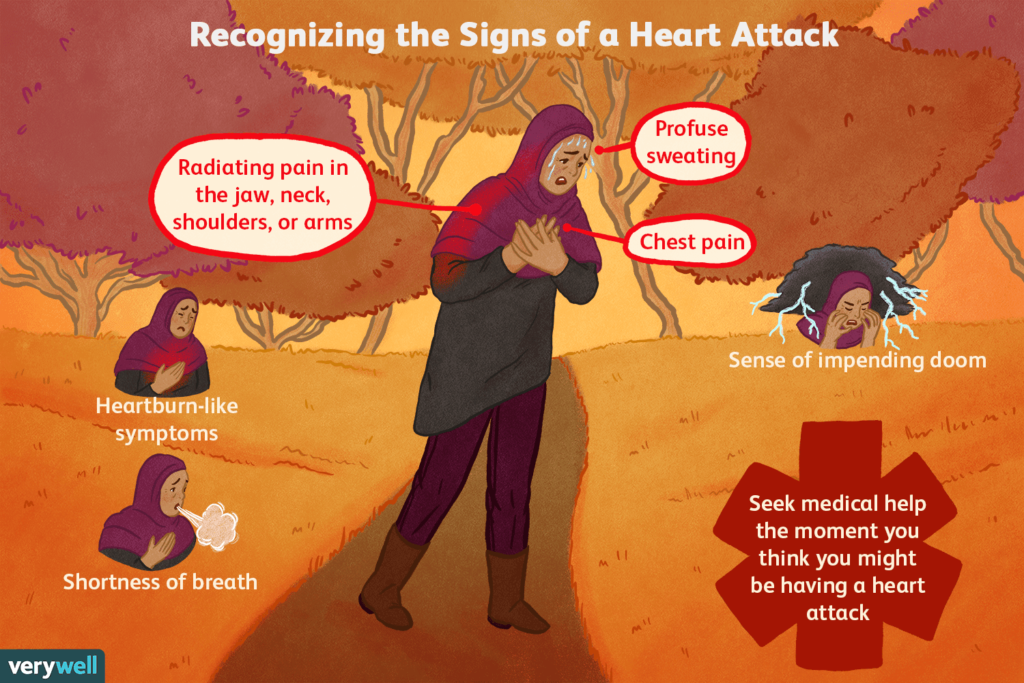
I had called into my doctor’s office to see if chest discomfort I had felt climbing stairs (and then replicated running up my driveway) was something I should “get checked out.” Unfortunately, neither the receptionist nor I recognized that my “chest pain upon exertion” called for urgent action. I wouldn’t get a call back from a nurse for 2 hours, and wouldn’t get to my primary care facility until noon. Things turned out fine for me, but if you have symptoms of a heart attack, you should take and aspirin and call 911 right away.
Second, why did I still have the ticket? After treatment at the Brigham, I returned to Newton Wellesley the following week to meet with a dietician as part of onboarding into cardiac rehab. As I entered the parking garage, I had a sudden realization.
I was driving in for the second time, but I’d never driven out.
When I had traveled there from my doctor’s office on June 14th, it hadn’t occurred to me that I might be leaving via ambulance or not leaving at all. Each time I visit this parking garage, it reminds me of my exit “deficit” and how quickly life can change.
Some Statistics
Survival rates from heart attacks have been increasing over time. Years ago, half of the people experiencing a heart attack died, many within the first hour. Now almost 90% of people survive, although this survival has increased the number of people living with, and dying of, heart failure. About 1 in 4 deaths in the US are related to heart disease. 805,000 people have heart attacks each year, with 605,000 of those being their first heart attacks. One in five heart attacks are “silent” and undiagnosed, with permanent, undetected damage done due to lack of treatment.
Cardiac arrests, which can come after a heart attack, and can have other causes beyond myocardial infarction, strike 600,000 individuals a year, with 395,000 of those cases occurring outside hospitals. Survival rates are only 6%. Better awareness of how to do CPR and how to use a defibrillator is the key to increasing survival rates from cardiac arrests.
Time is Muscle

A third cautionary tale from this ticket was my choice to park in the regular garage rather than the emergency room garage. I figured that since I was getting around on my own, it didn’t make sense for me to take up space in the emergency room parking.
Denial is not just a river in Egypt.
It took me quite a while to find my way through the hospital labyrinth to the ER, and with my artery blocked, that walking and stairway exertion was further depriving portions of my heart muscle of full oxygen supply. Keeping still, and minimizing oxygen demand, is the best course of action for someone experiencing a heart attack, and the associated deficits in O2 delivery to the heart and other parts of the body.
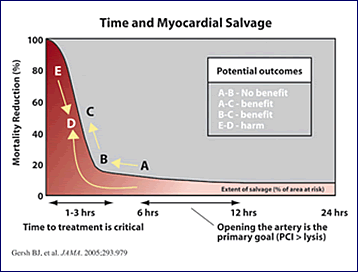
Although my second attack had been much more minor than the one five days previous, troponin blood tests done that afternoon showed significant in-progress heart muscle damage from this second event as well:
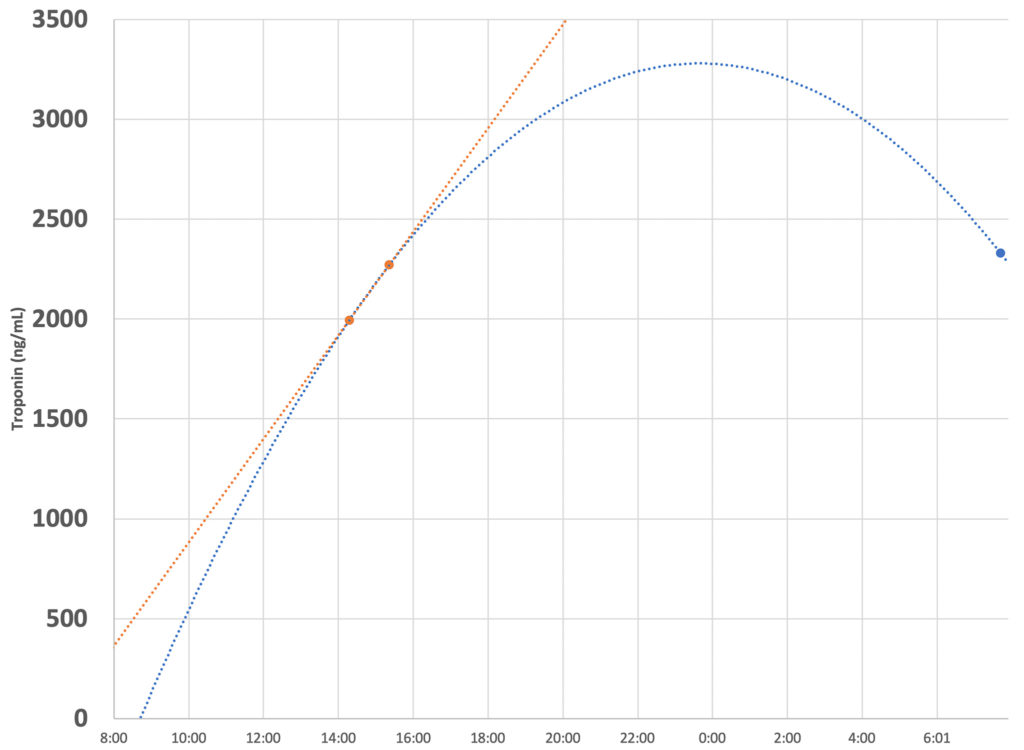
But as I described in Thanksgiving, all’s well that ends well. An important part of my recovery was going through several sessions of twice-a-week Cardiac Rehab at Newton-Wellesley Hospital. While my heart was in great shape, it was good to have a couple of treadmill sessions each week with real-time EKG monitoring to boost confidence. The program also has a balanced focus on diet, yoga, and meditation. An hour with a dietician reviewing my habits as part of the program intake allowed me to make a few tweaks to my diet (reduce processed carbs) that quickly melted off a huge amount of weight. That, in turn, benefited my running, blood values, etc.
There is a final light-hearted story the exit ticket brings to mind. I had Lisa’s car that day and had left my iPad in it. She had arrived by Uber just as I was leaving, and was unable to find the car. So during my ambulance ride to the Brigham, I used “Find my iPhone” to text a screenshot of the location to her. Now that was an unusual use for that app!
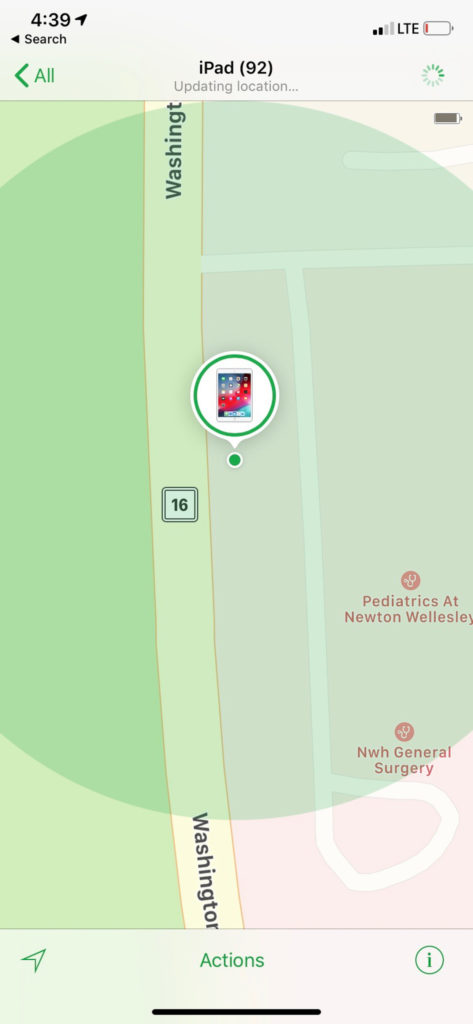
P.S. As of yesterday, I’m now officially entered in the 125th Boston Marathon with a qualifying time of 3:34:44, running to fund the 2020 Newton Rotary Scholarships, and I’ll be running (briskly) past this hospital garage at mile 16 on April 20th.
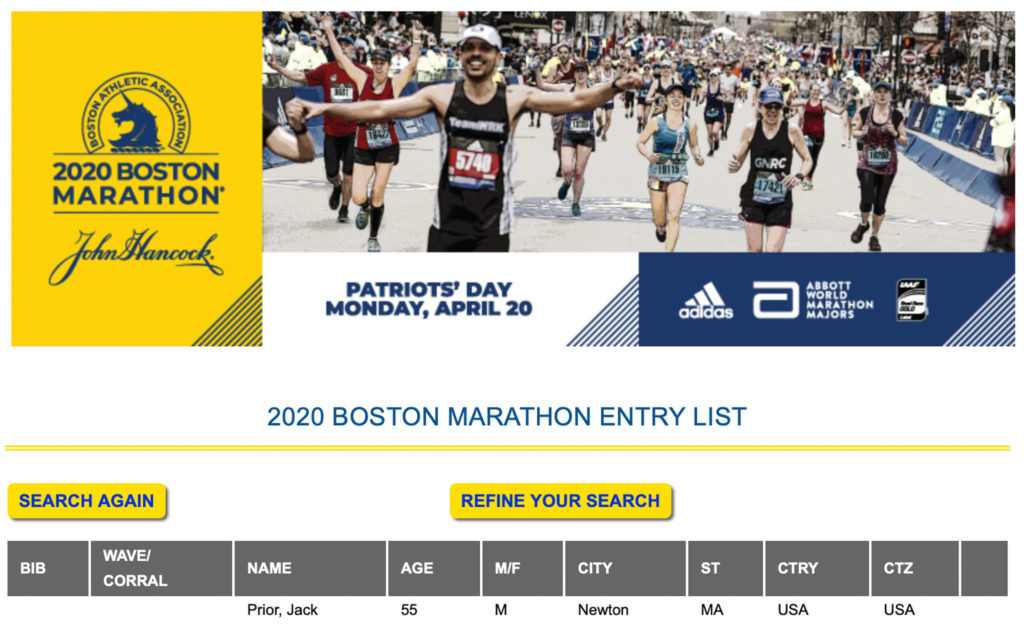
Happy New Year — Jack

